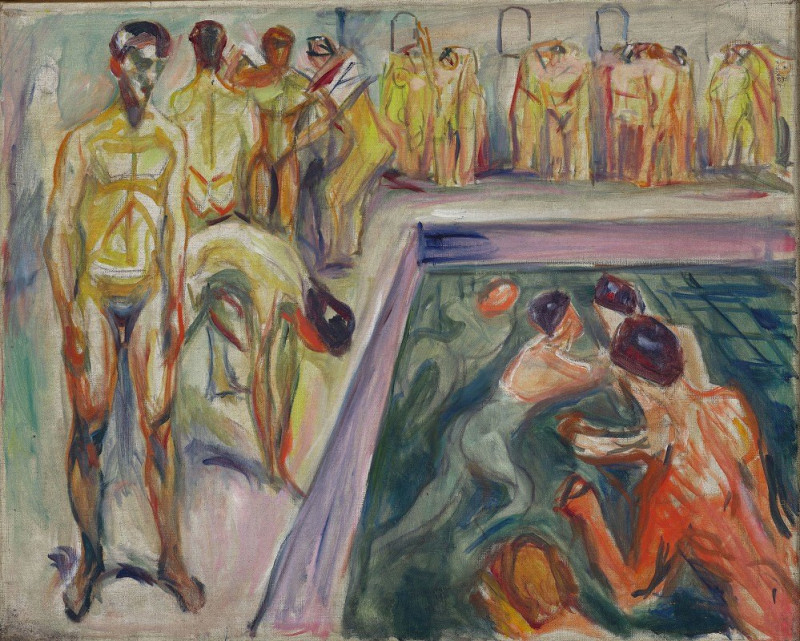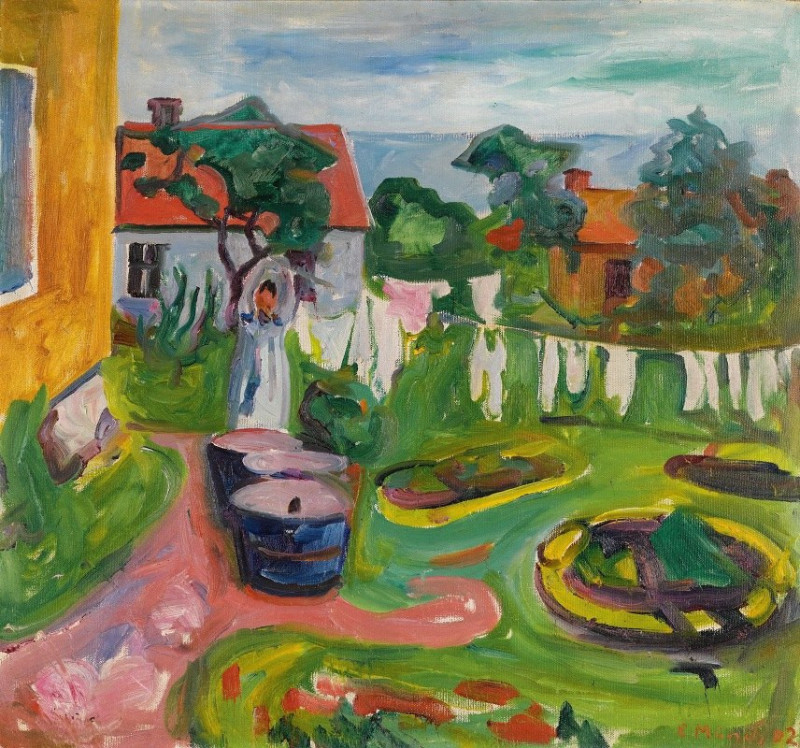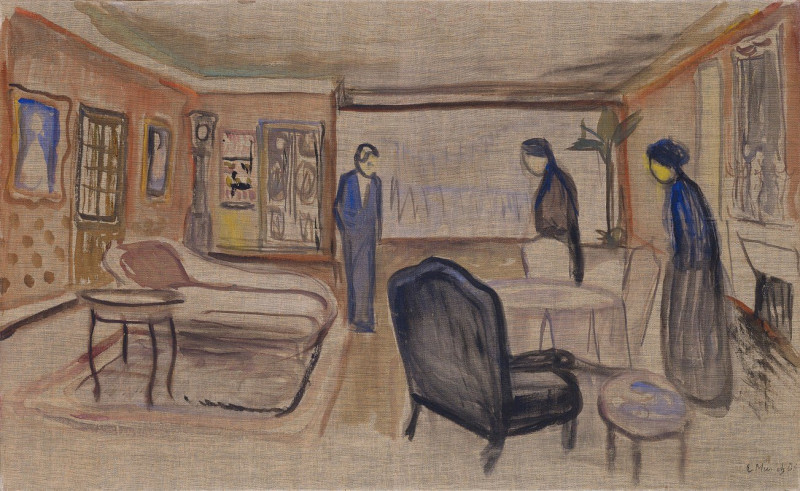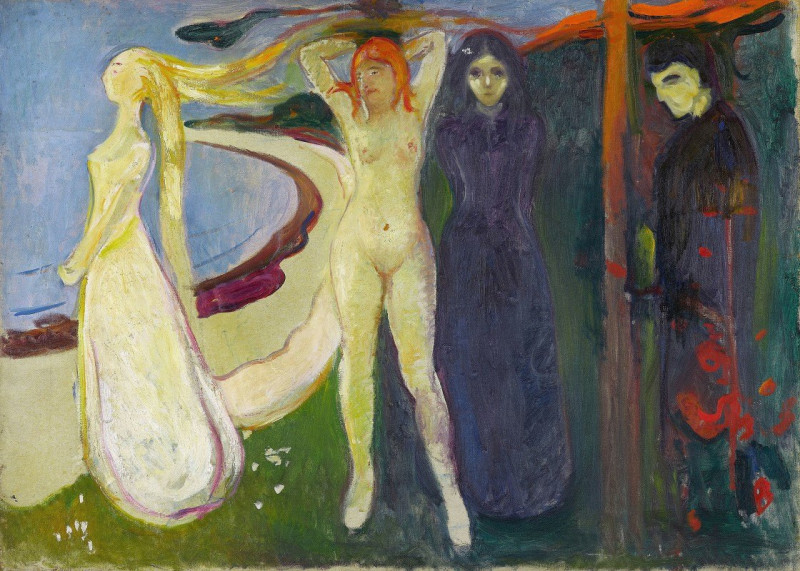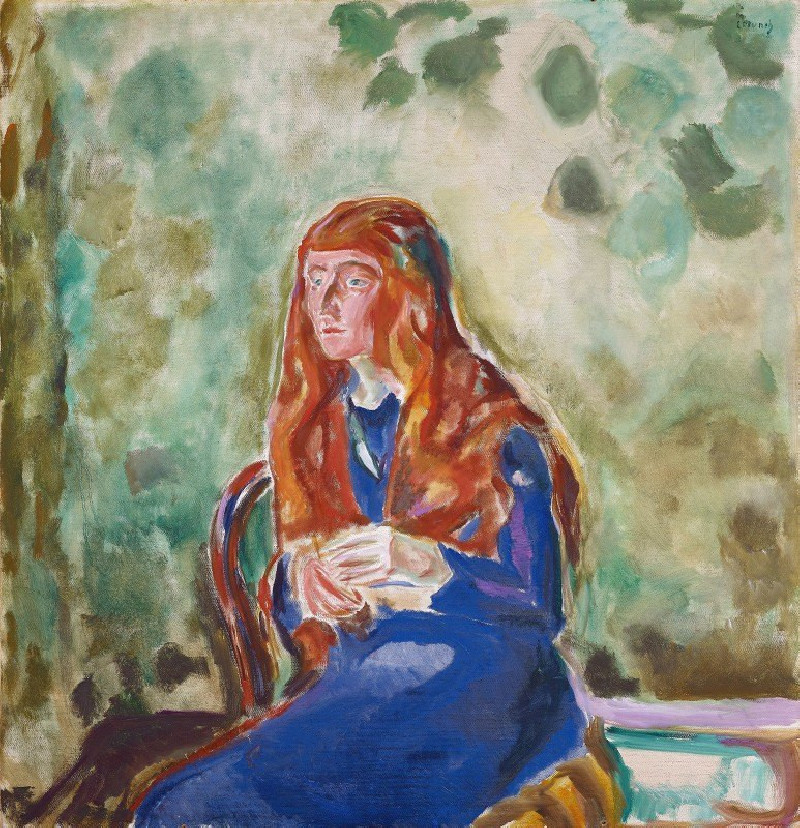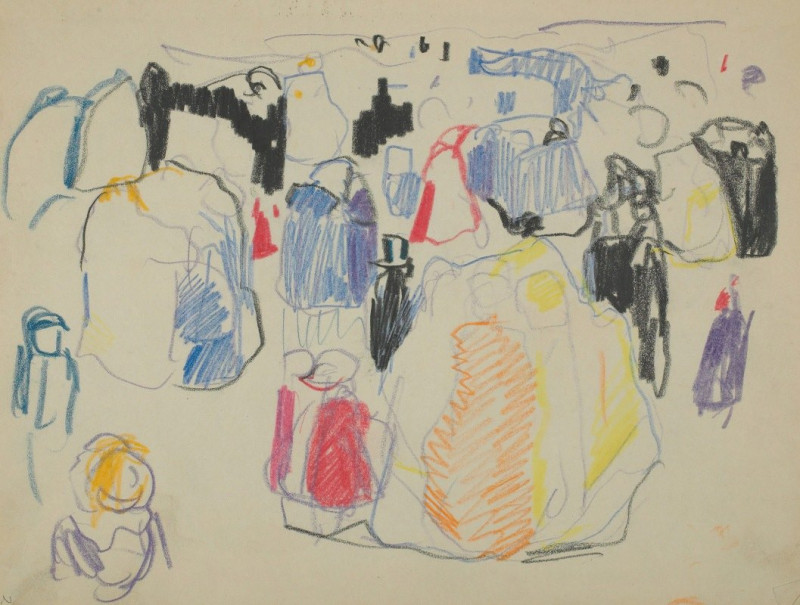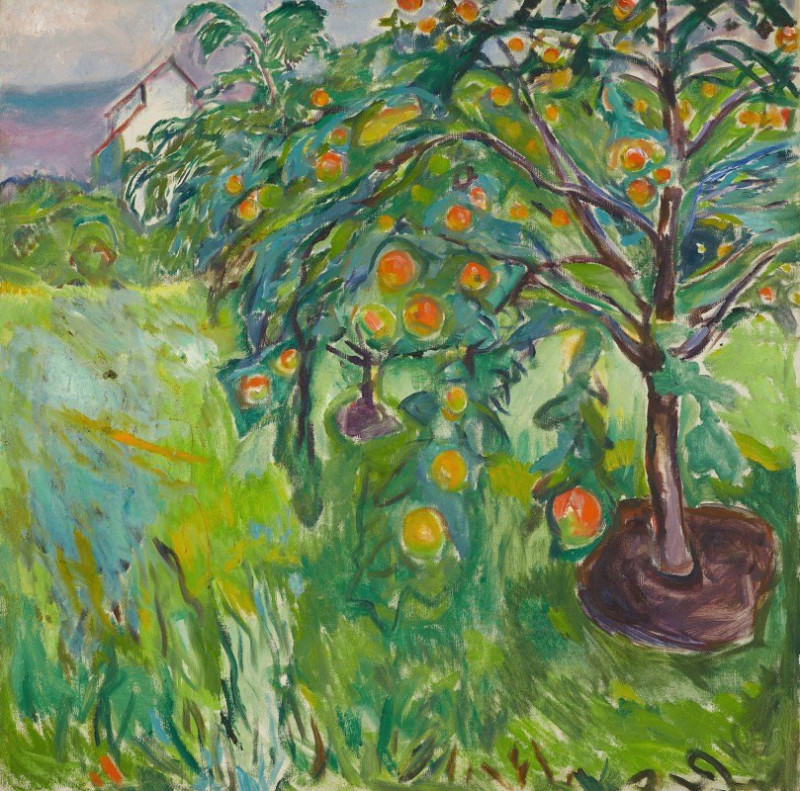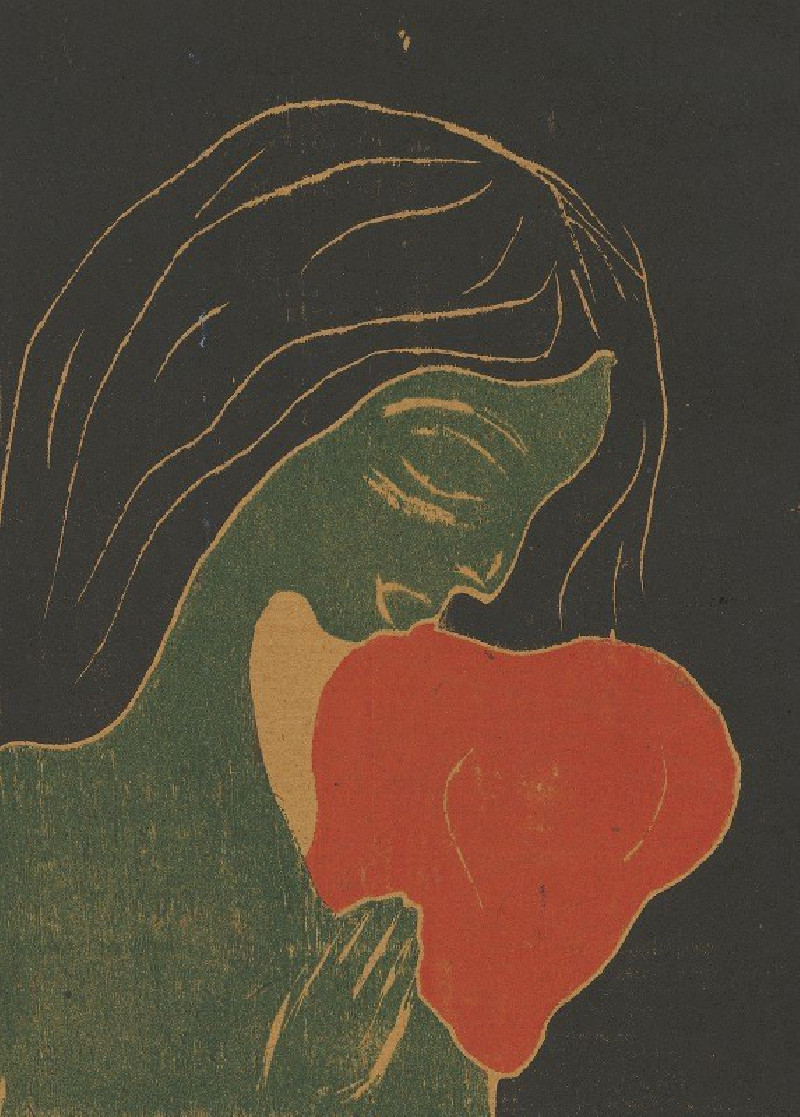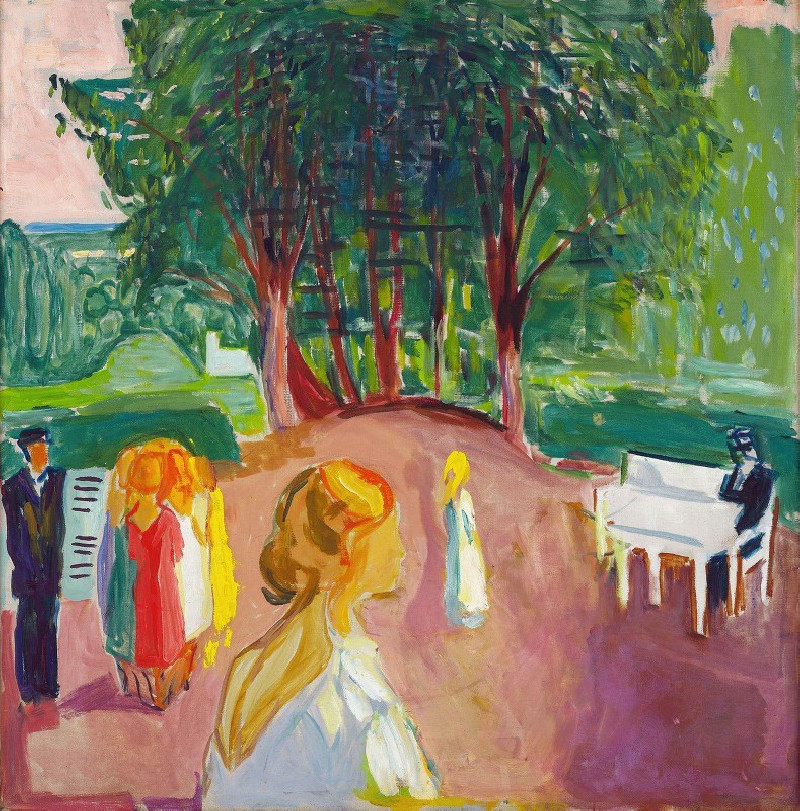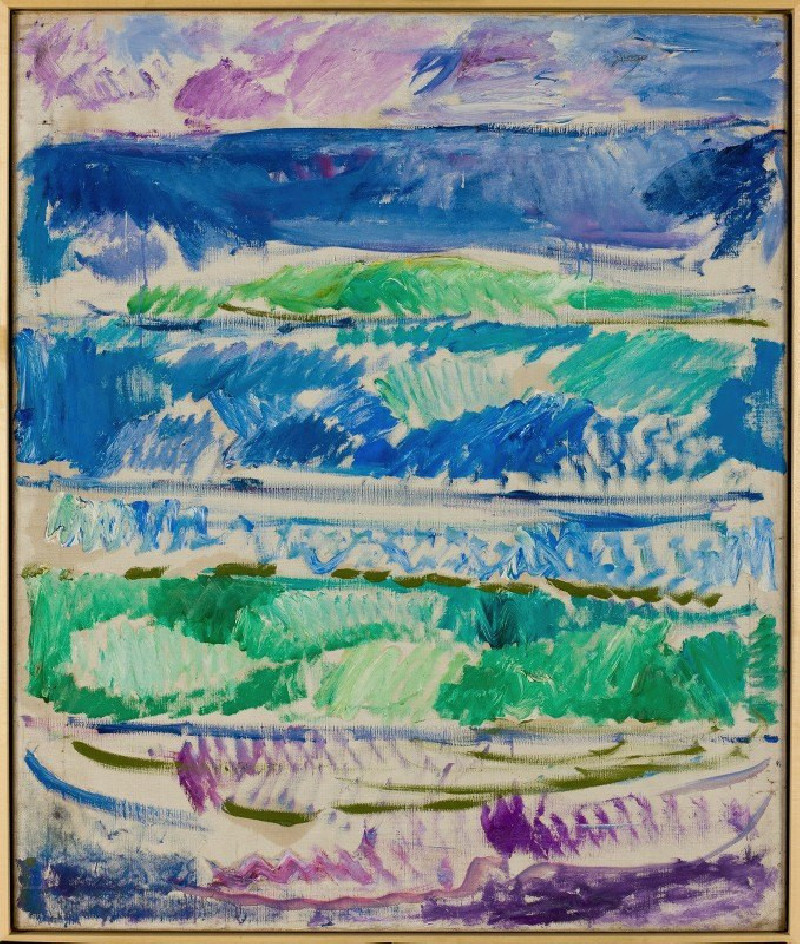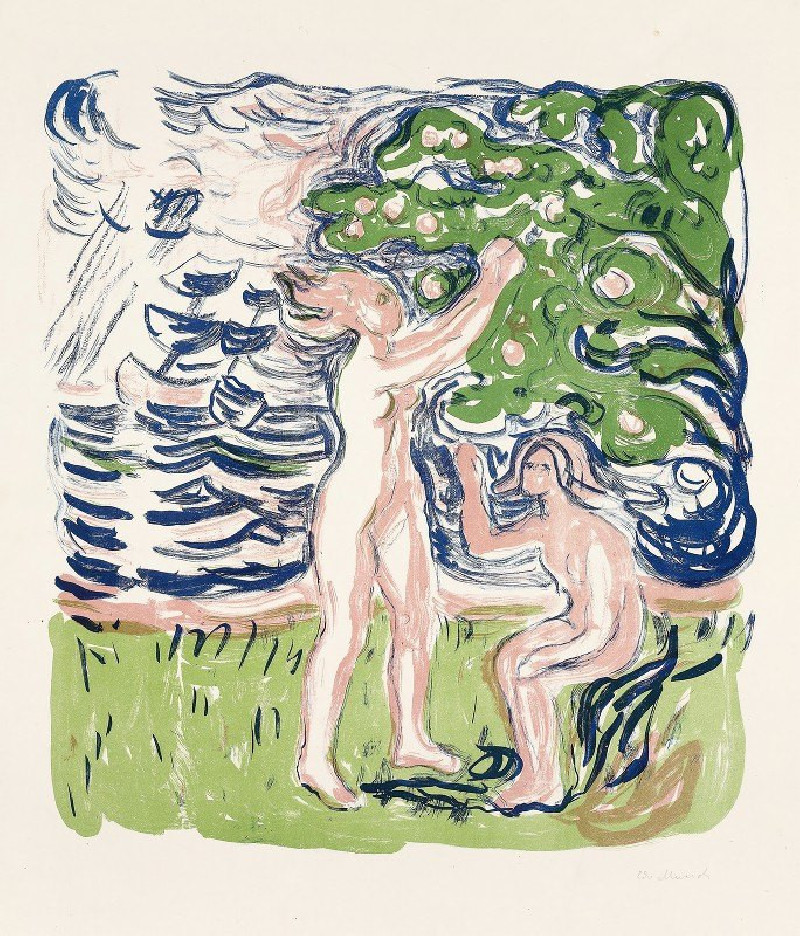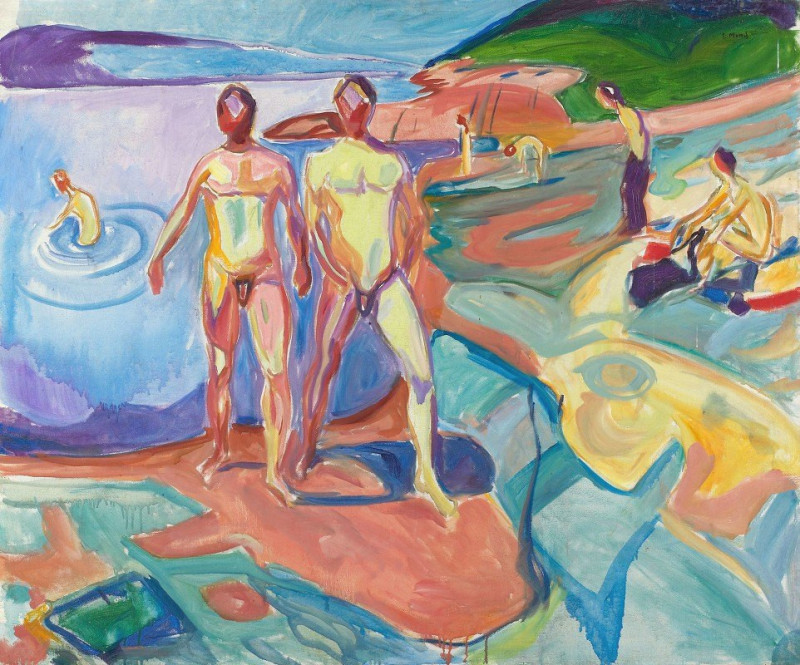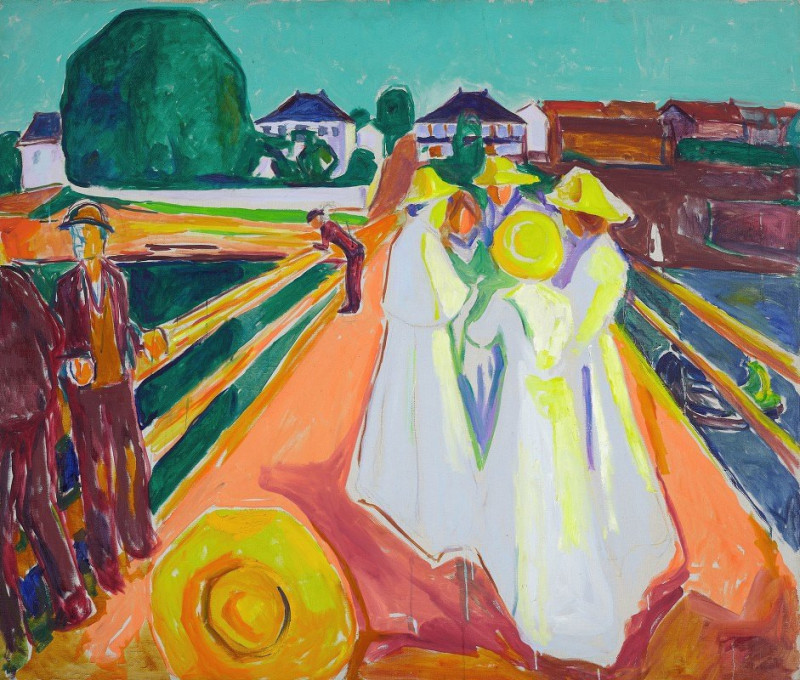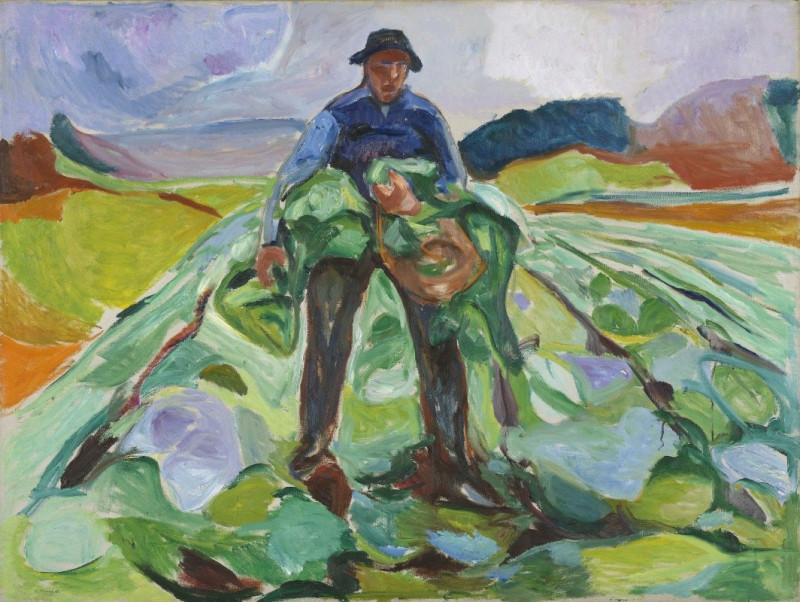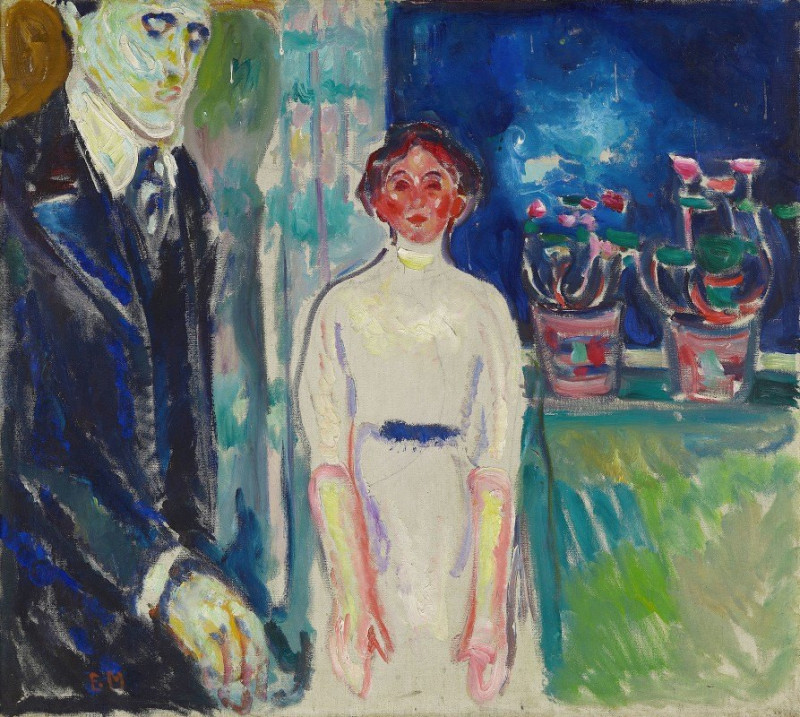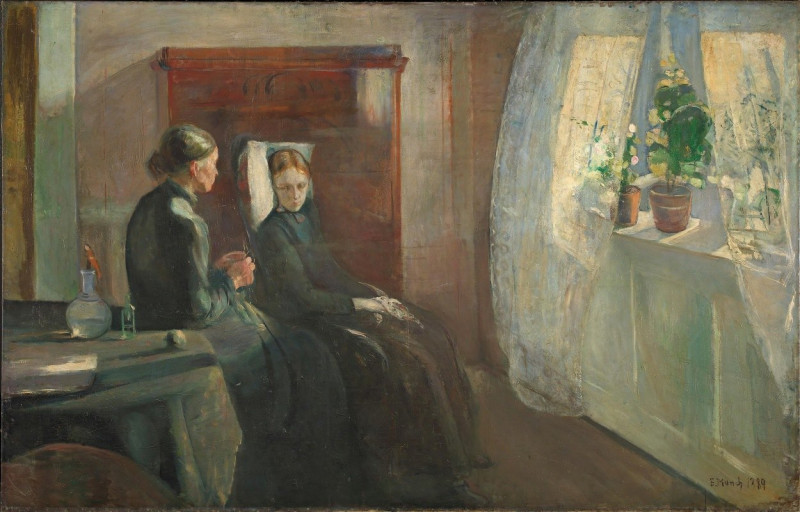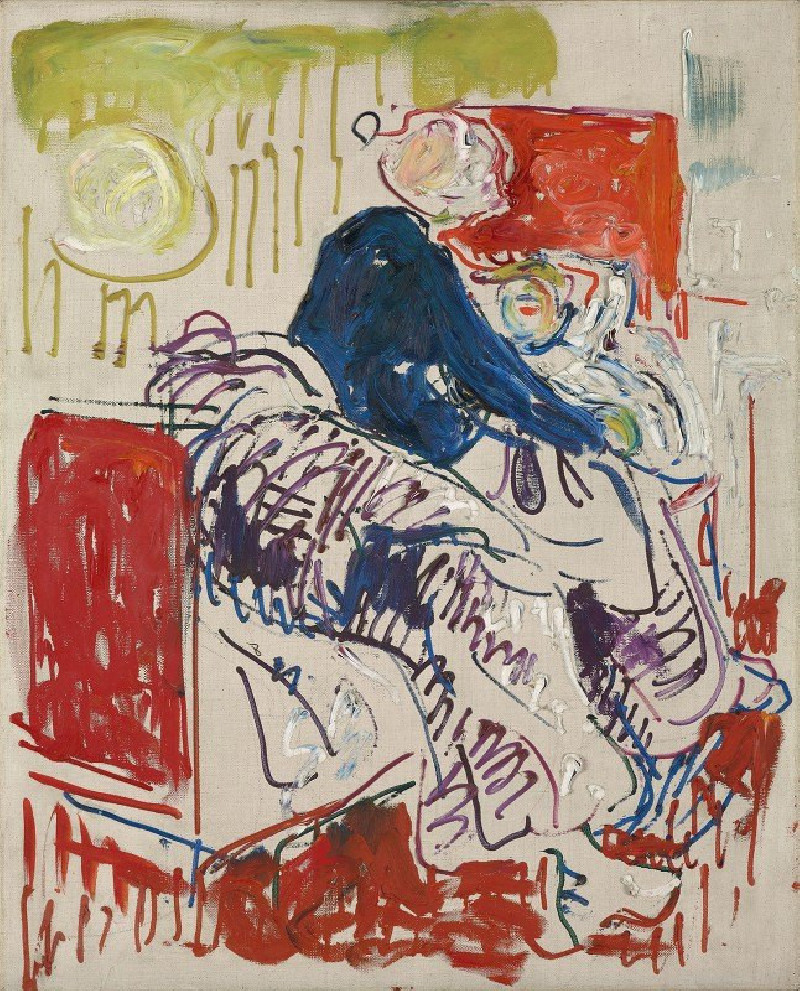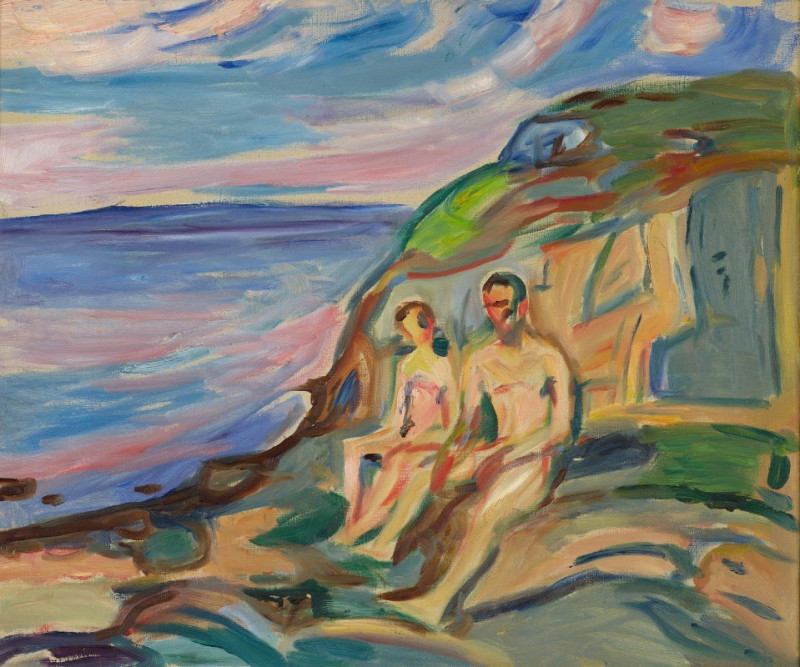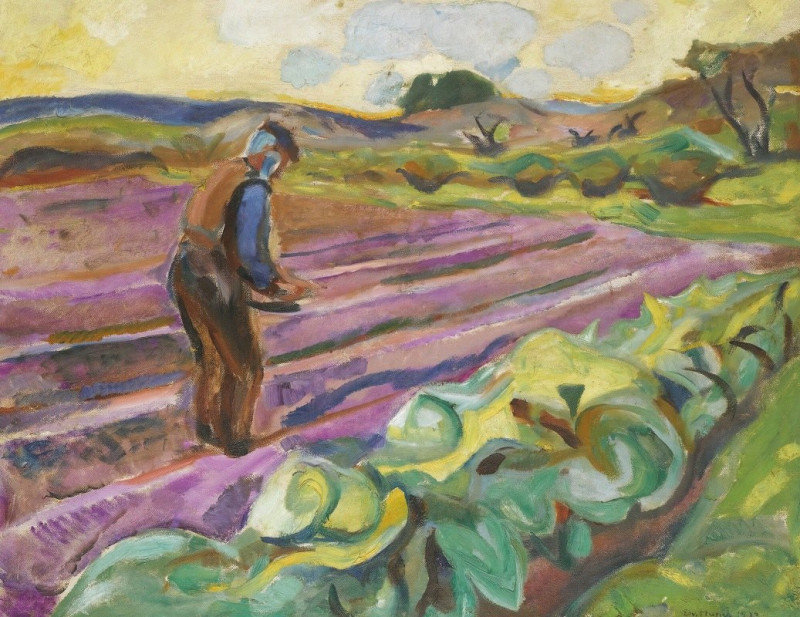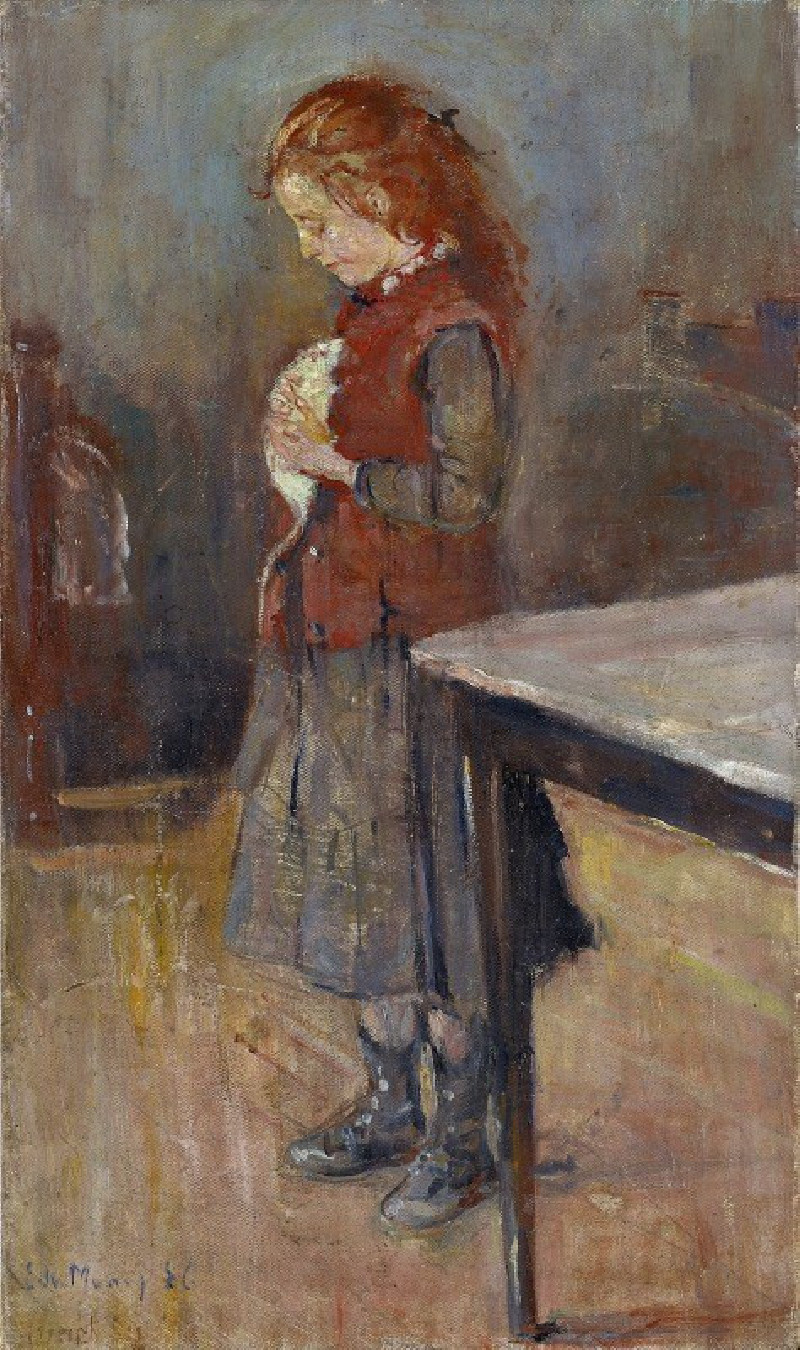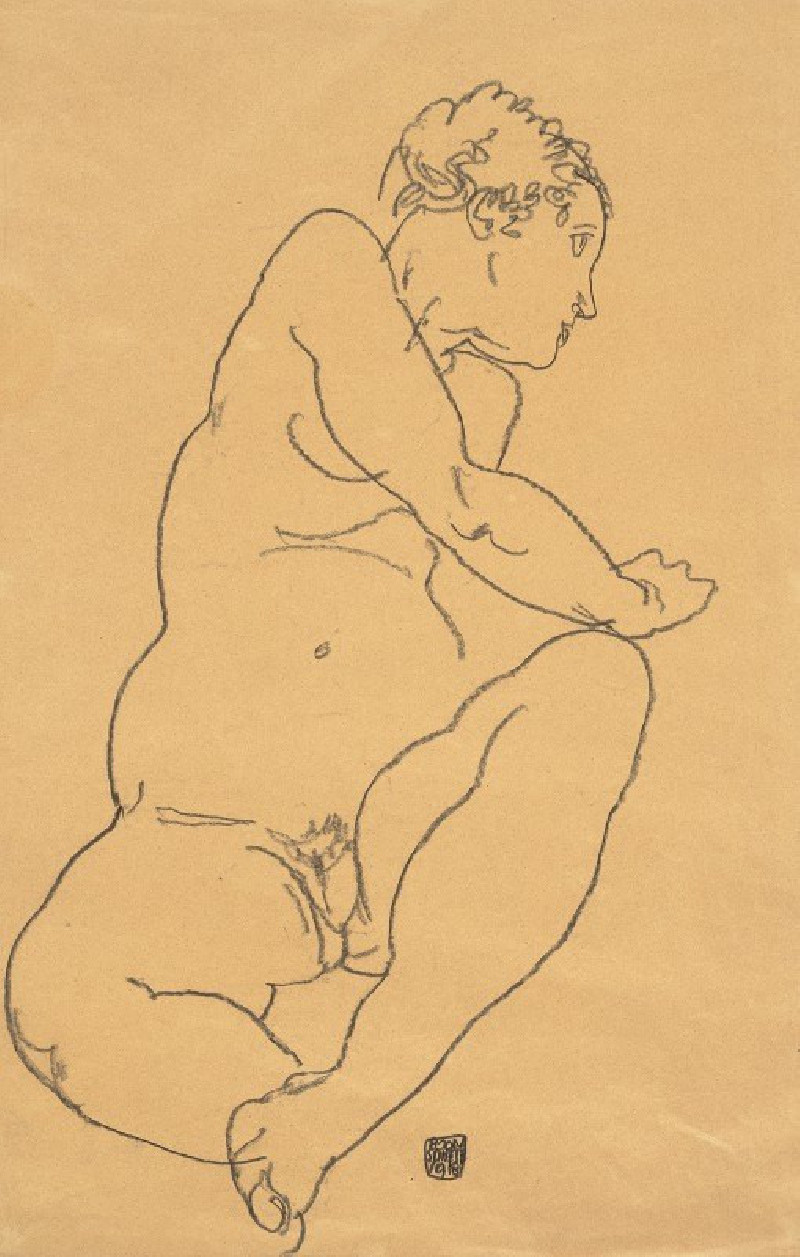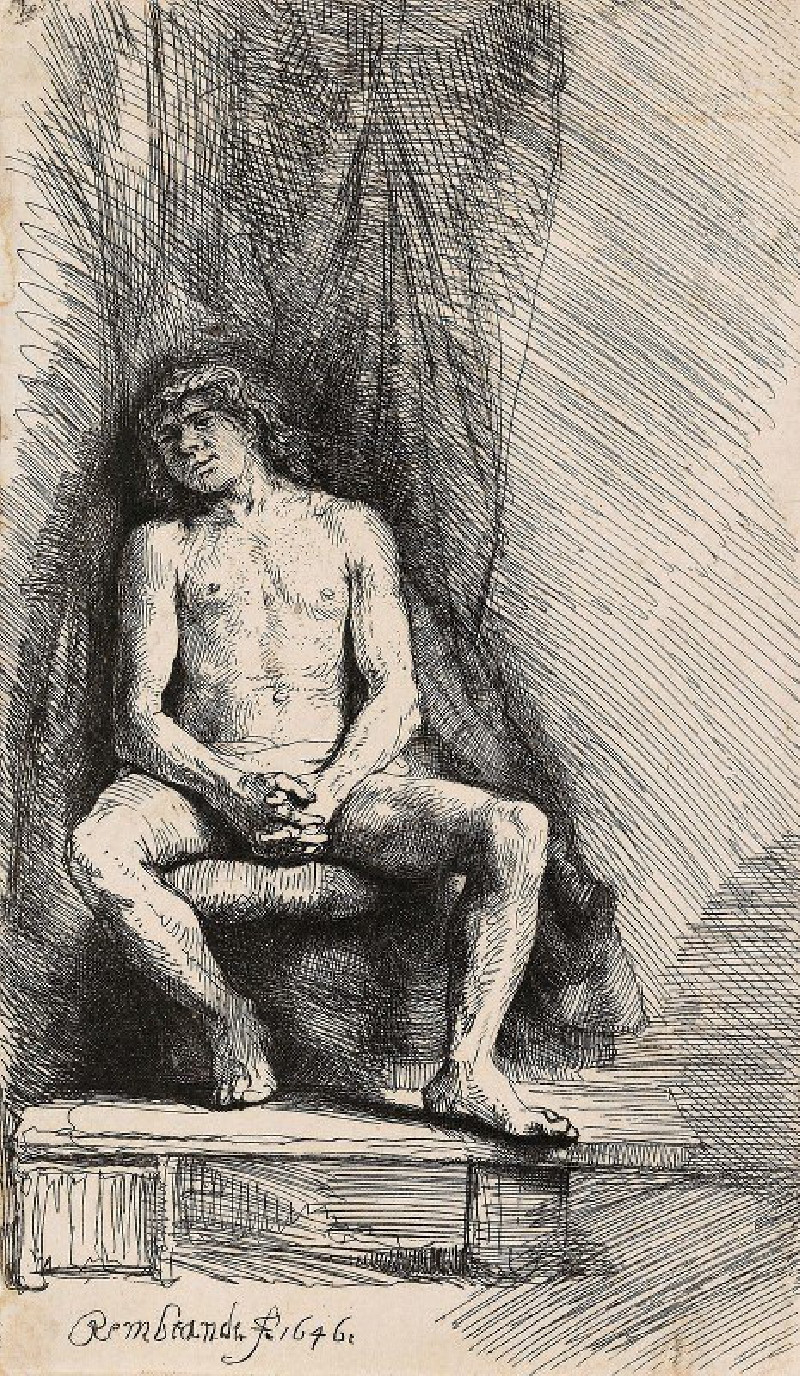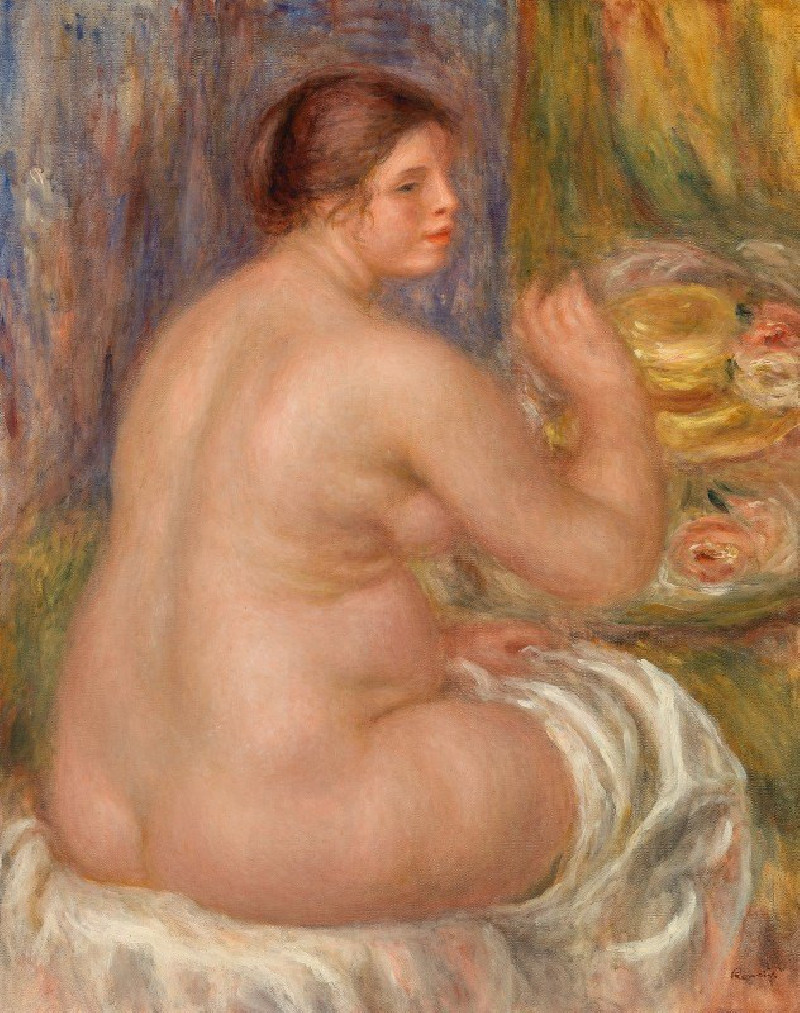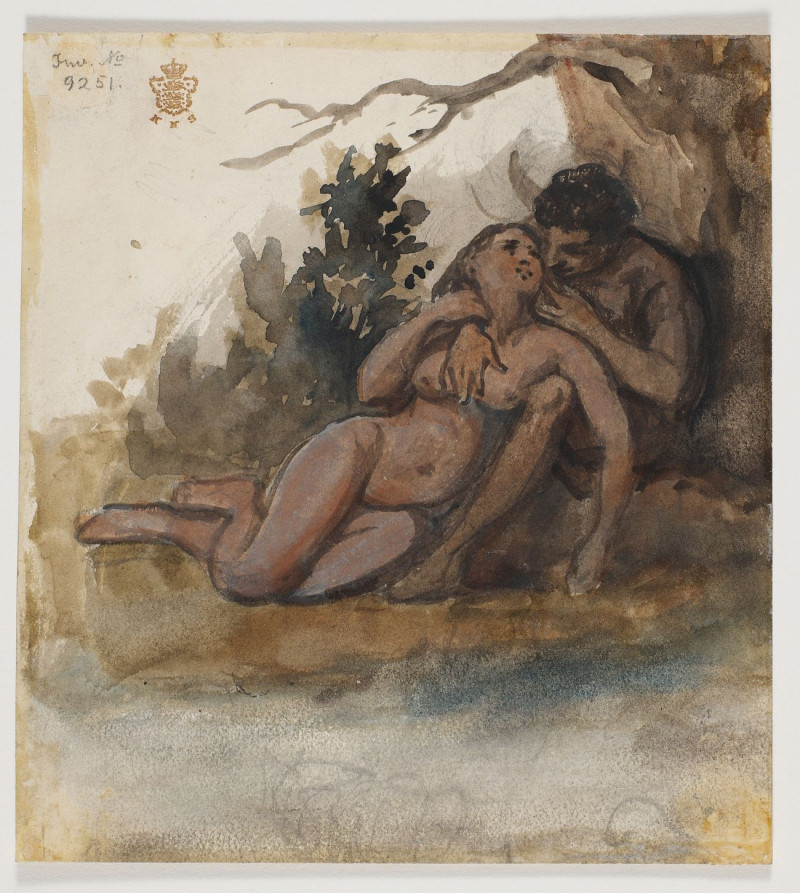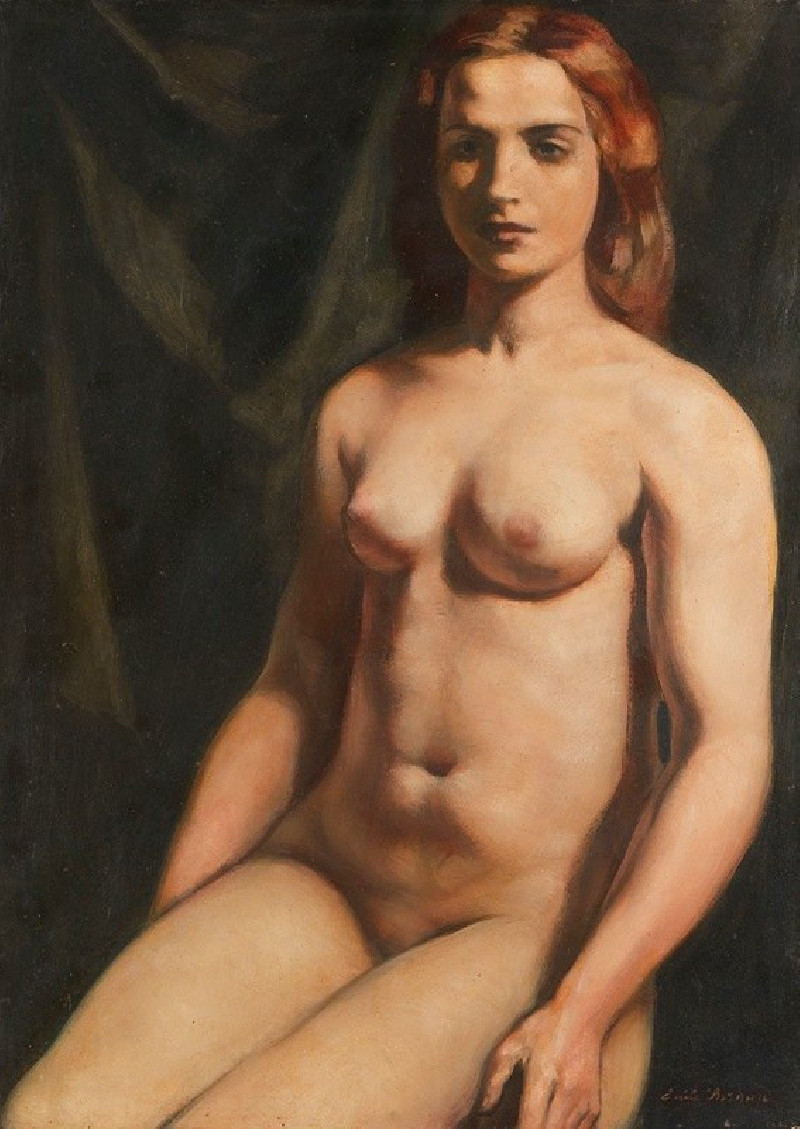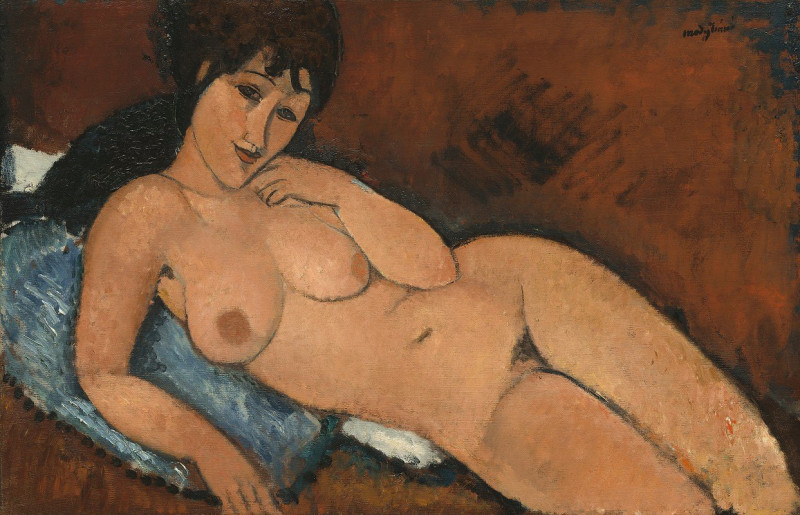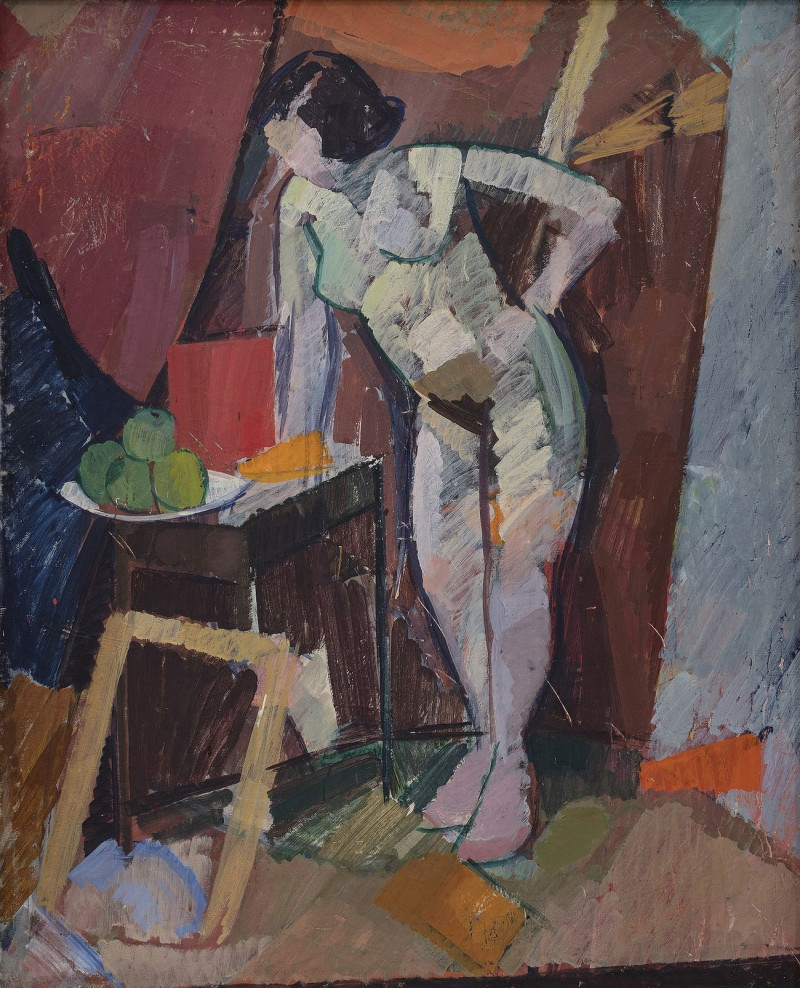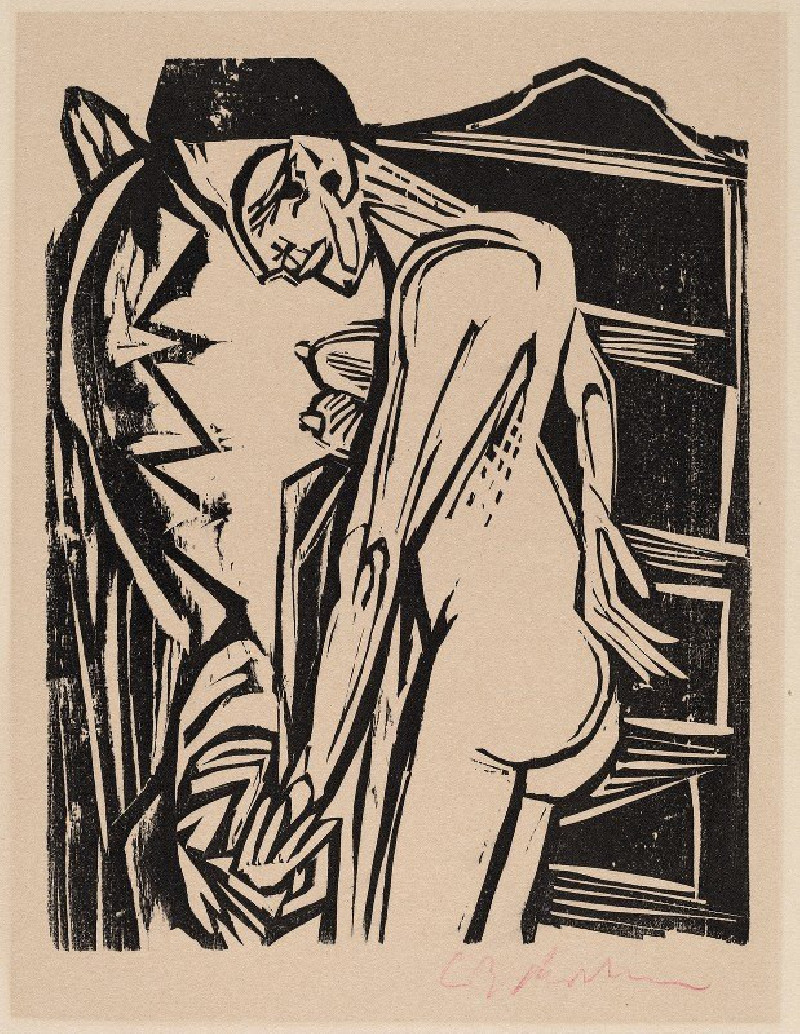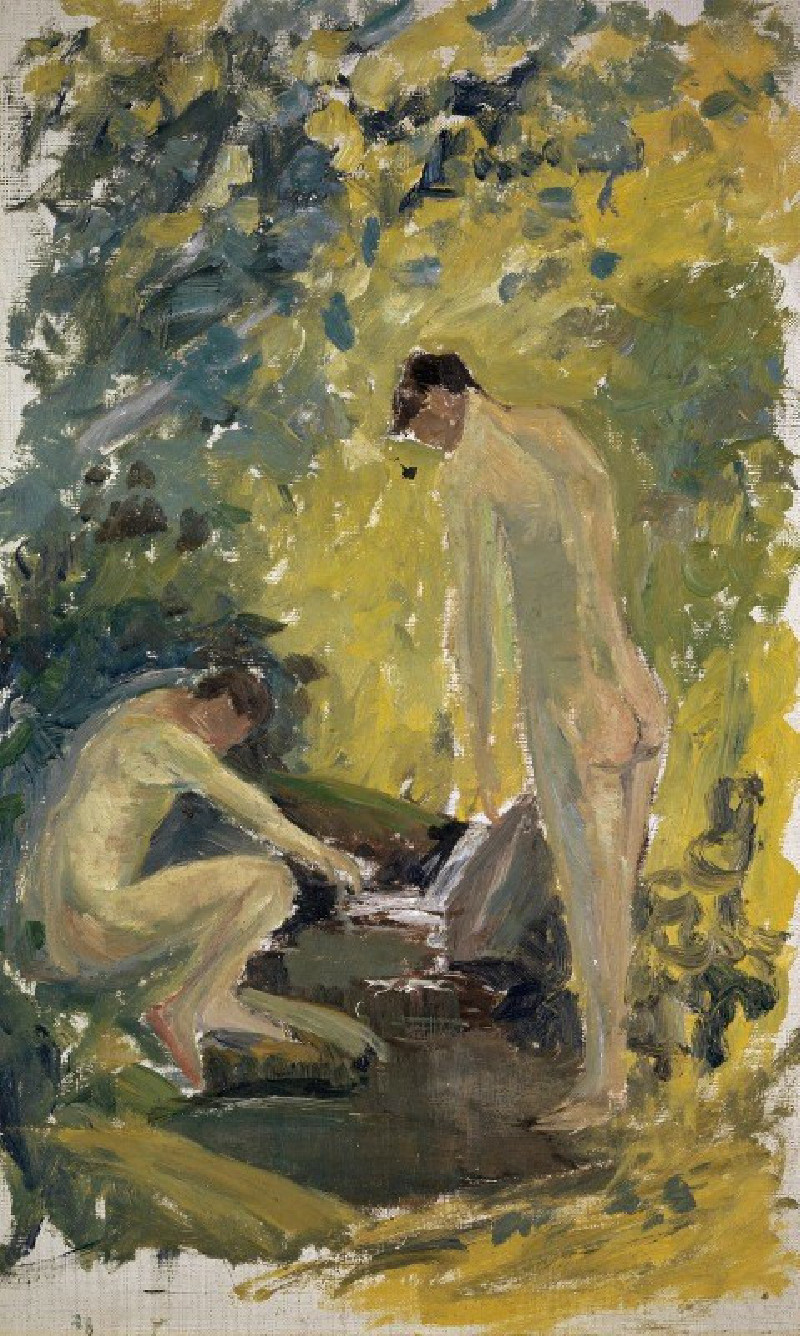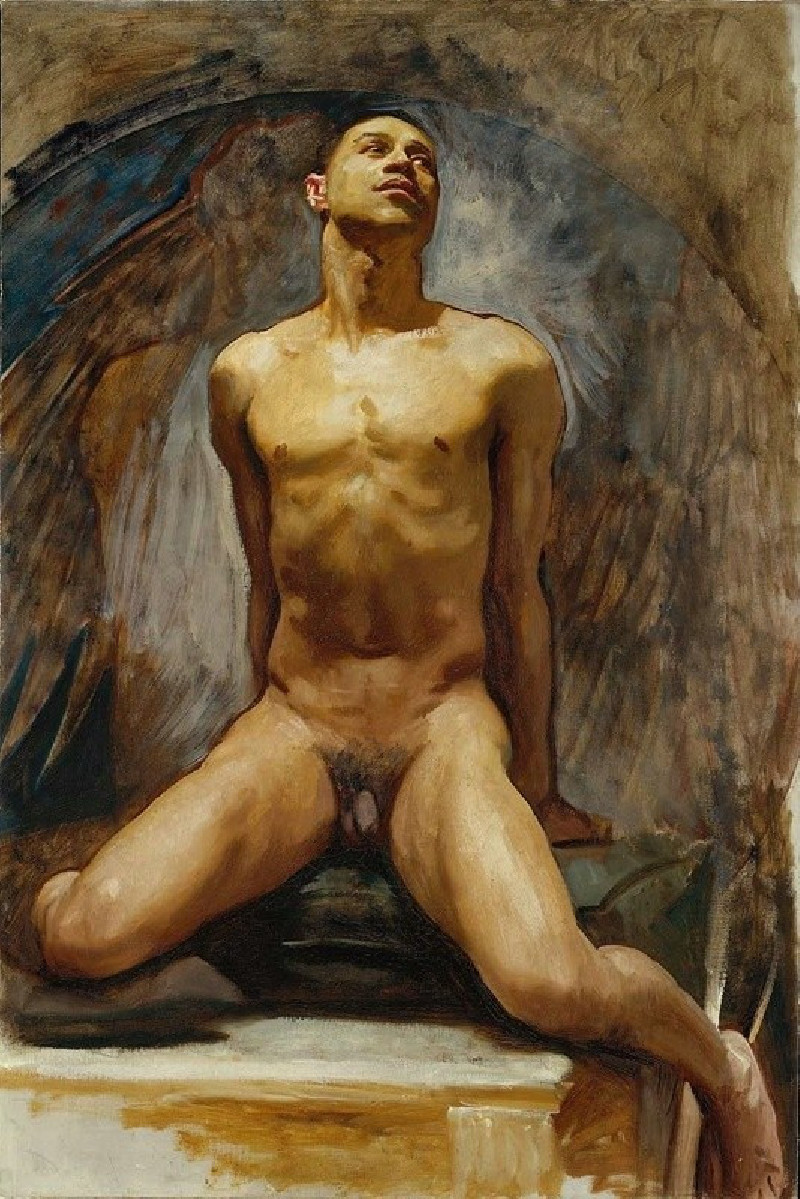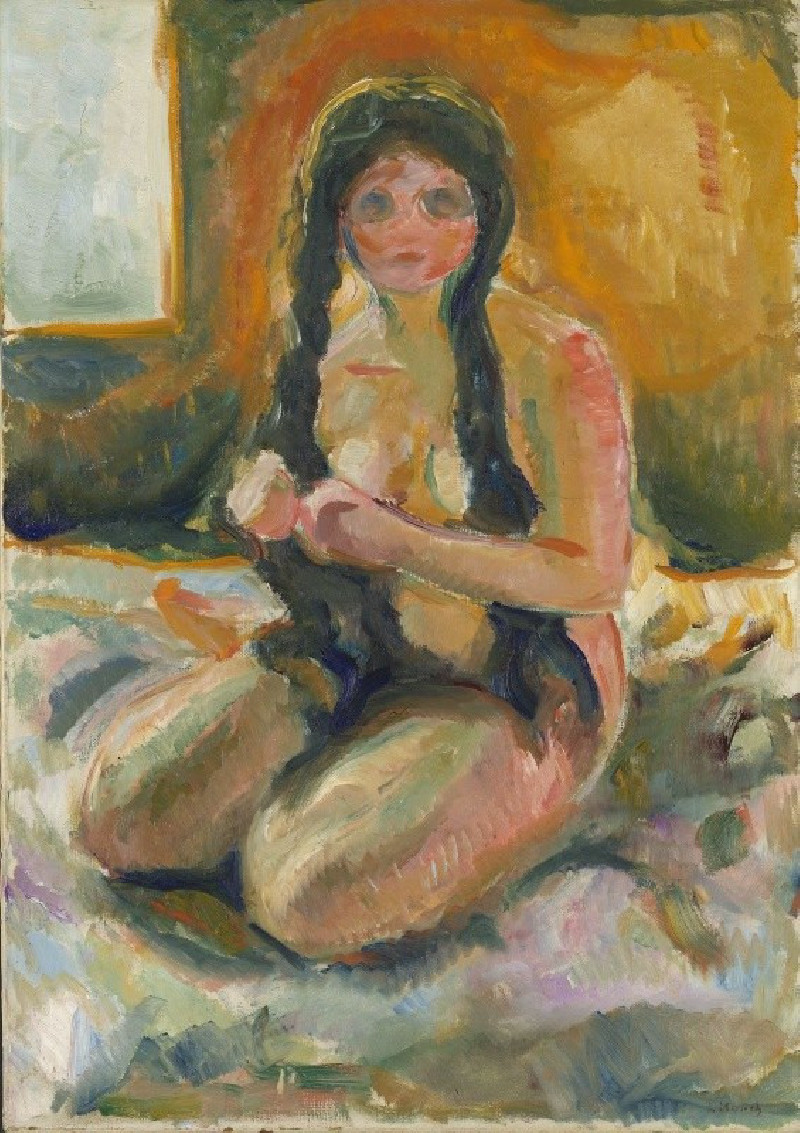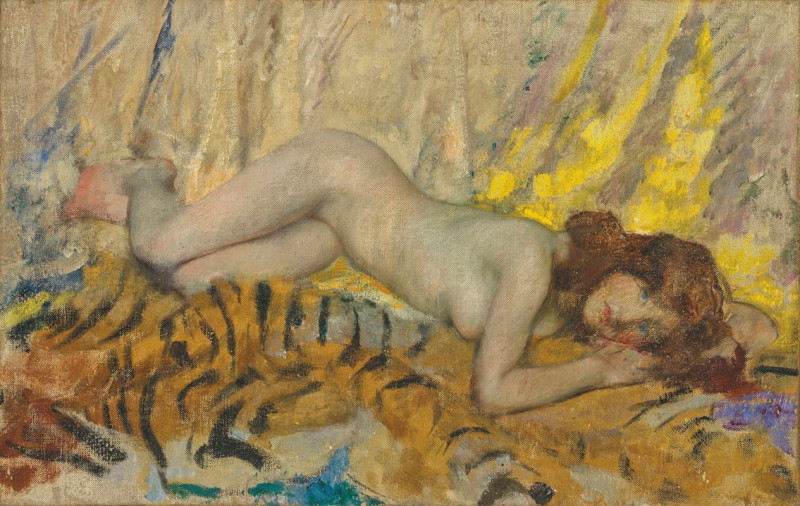Naked Men in Swimming Pool (1923)
Technique: Giclée quality print
Recommended by our customers
More about this artwork
The painting "Naked Men in Swimming Pool" by Edvard Munch, created in 1923, offers a vivid depiction of several men engaged in various activities at a swimming pool. The scene is split into different segments that bring movement and grouping to the composition.On the left, we see a group of men outside the water. There's a prominent figure standing up in the foreground, portrayed with a robust and defined body, highlighted by Munch's expressive brushwork which emphasizes the contours of muscles and forms. This figure’s pose is slightly turned, giving an impression of movement or readiness.In the background, behind this main figure, there are more men, some facing towards us and others turned away, adding depth and perspective to the scene. These figures are less detailed and more abstract, with softer and broader strokes, creating an ethereal feel. They seem to be engaged in various states of dressing or undressing, or perhaps merely spectating.To the right is the swimming pool itself, occupied by men who are swimming or interacting with each other. The water is depicted with swirling, expressive lines of blues and greens, which suggests the movement of water around the swimmers. This section is vibrant with action; figures in the pool are shown in different poses, some facing each other, while others are in the midst of swimming strokes.Edvard Munch's style here, characterized by loose and fluid brush strokes and a rich palette, conveys a dynamic and lively atmosphere.
Delivery
Returns
Edvard Munch (12 December 1863 – 23 January 1944) was a Norwegian painter. His best known work, The Scream (1893), has become one of Western art's most iconic images.
His childhood was overshadowed by illness, bereavement and the dread of inheriting a mental condition that ran in the family. Studying at the Royal School of Art and Design in Kristiania (today's Oslo), Munch began to live a bohemian life under the influence of the nihilist Hans Jæger, who urged him to paint his own emotional and psychological state ('soul painting'); from this emerged his distinctive style.

